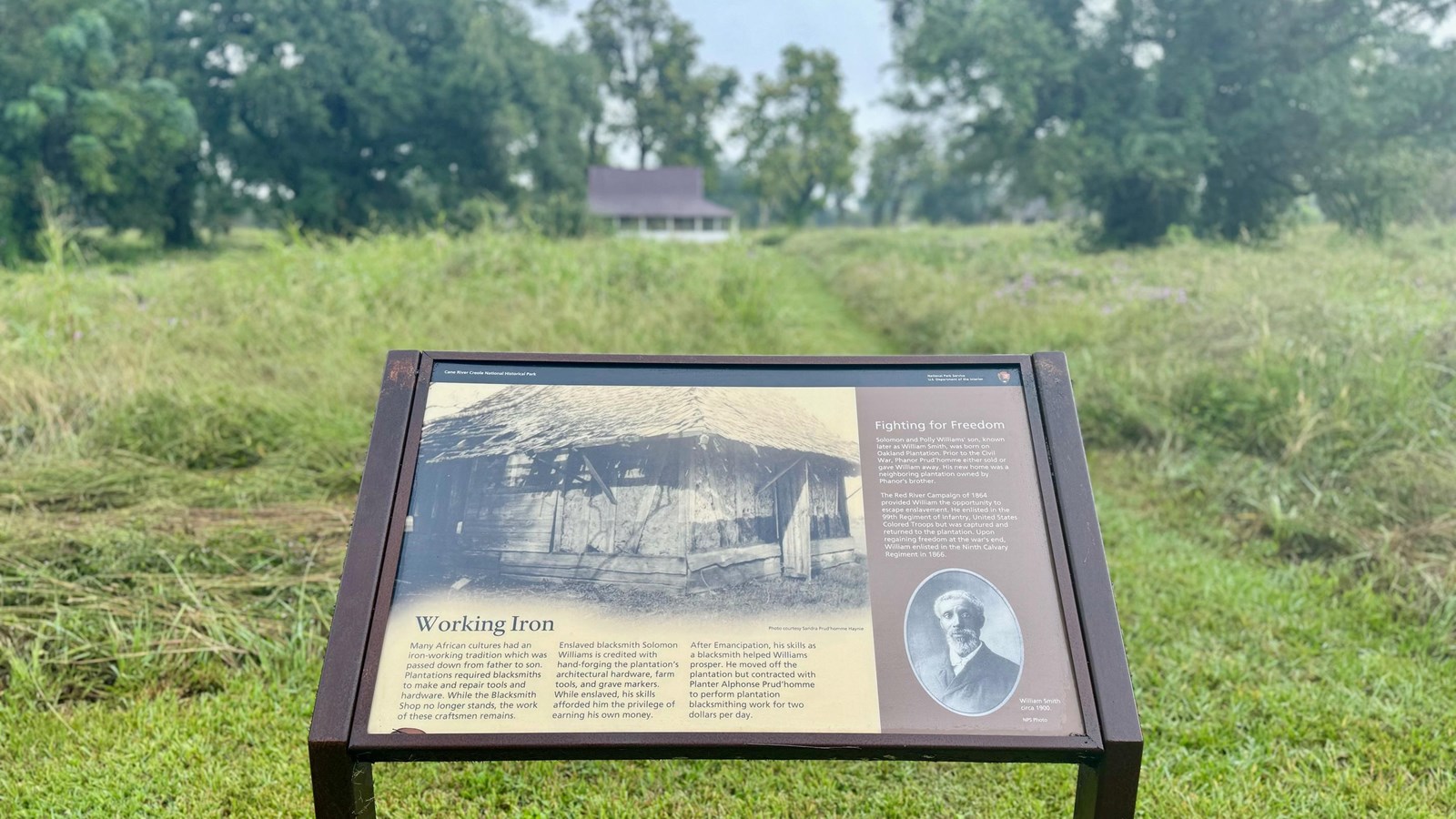Last updated: September 6, 2024
Place
Working Iron

Christy Hoover
Quick Facts
Location:
Natchez, LA
Amenities
1 listed
Historical/Interpretive Information/Exhibits
Many African cultures had an iron-working tradition which was passed down from father to son. Plantations required blacksmiths to make and repair tools and hardware. While the Blacksmith Shop no longer stands, the work of these craftsmen remains.
Enslaved blacksmith Solomon Williams is credited with hand-forging plantation's architectural hardware, farm tools, and grave markers. While enslaved, his skills afforded him the privilege of earning his own money.
After Emancipation, his skills as a blacksmith helped Williams propser. He moved off the plantation but contracted with Planter Alphonse Prud'homme to perform plantation blacksmithing work for two dollars per day.
Solomon and Polly Williams' son, known later as William Smith, was born on Oakland Plantation. Prior to the Civil War, Phanor Prud'homme either sold or gave William away. His new home was a neighboring plantation owned by Phanor's brother.
The Red River Campaign of 1864 provided William the opportunity to escape enslavement. He enlisted in the 99th Regiment of Infantry, United States Colored Troops but was captured and returned to the plantation. Upon gaining freedom at the war's end, William enlisted in the Ninth Calvary Reginment in 1866.
Enslaved blacksmith Solomon Williams is credited with hand-forging plantation's architectural hardware, farm tools, and grave markers. While enslaved, his skills afforded him the privilege of earning his own money.
After Emancipation, his skills as a blacksmith helped Williams propser. He moved off the plantation but contracted with Planter Alphonse Prud'homme to perform plantation blacksmithing work for two dollars per day.
Fighting for Freedom
Solomon and Polly Williams' son, known later as William Smith, was born on Oakland Plantation. Prior to the Civil War, Phanor Prud'homme either sold or gave William away. His new home was a neighboring plantation owned by Phanor's brother.
The Red River Campaign of 1864 provided William the opportunity to escape enslavement. He enlisted in the 99th Regiment of Infantry, United States Colored Troops but was captured and returned to the plantation. Upon gaining freedom at the war's end, William enlisted in the Ninth Calvary Reginment in 1866.
